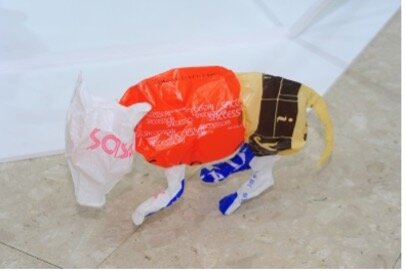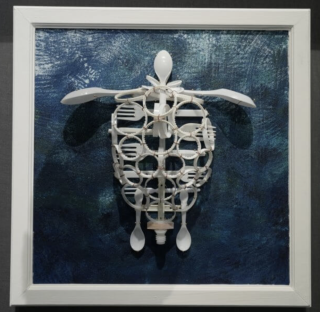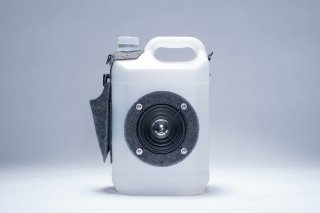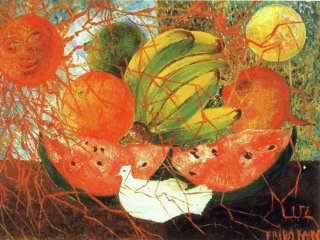
藝術家林玉蓮選用了膠袋作為主要物料創作裝置藝術「山海經後傳」。
這些膠袋蒐集自超市、食肆、連鎖店,有帶品牌或沒品牌的厚料、薄料、單色或印花手挽袋和「背心袋」。這些膠袋不但反映了城市人的消費文化,某些已絕版的膠袋設計本身亦具有其歷史意義。更巧合的是,在這個系列作品的創作過程中,政府針對濫用膠袋對自然環境帶來的問題,徵收膠袋費,有些停產的膠袋得來不易,讓作品又多了一重意義。此外,藝術家更借用《山海經》中所載造型怪異的動物,暗示基因改造工程和生物科技發展對人類的衝擊。
In her series of installation art pieces titled The Late Version of Shan Hai Jing, Lam Yuk-lin mainly uses plastic bags as her art-making materials. The plastic bags are collected from supermarkets, restaurants and chain stores, demonstrating a wide variety of designs: with and without brands, thick and thin, monotone and patterned, shopping bags and T-shirt bags. These shopping bags not only evoke the consumer culture of a cosmopolitan city, but also embody historical significance since some branded plastic bags are out-of-print and thus become rarities. Coincidentally, when the artist was working on her series, the government introduced the plastic bag levy scheme to address the environmental issue caused by the excessive use of plastic bags. In light of this policy, some plastic bag designs would no longer be available. As such, the series is endowed with an unexpected dimension of significance. Moreover, inspired by the alien creatures featured in Shan Hai Jing, the artworks are suggestive of the impact of genetic modification and biotechnology on human development.




